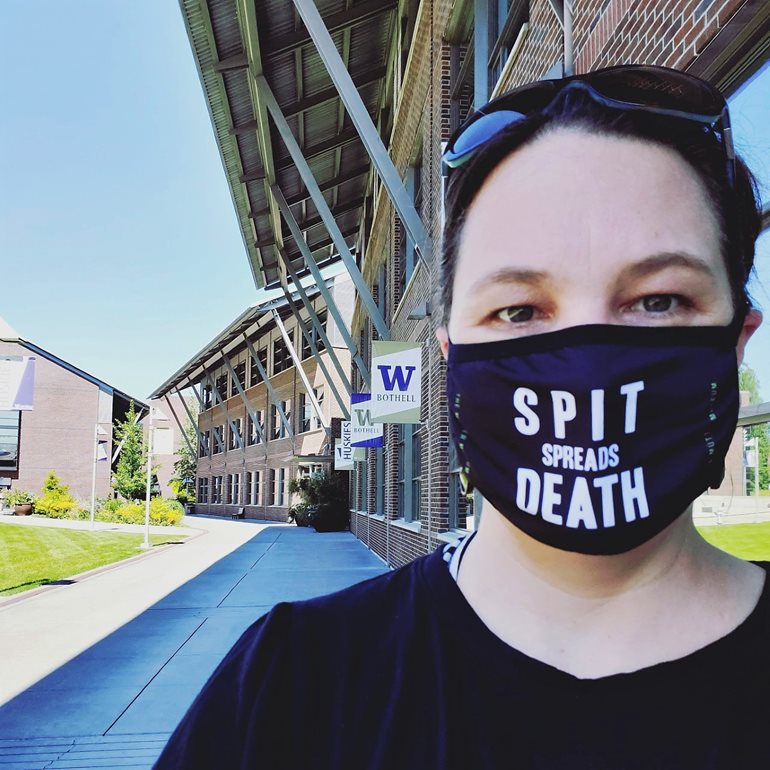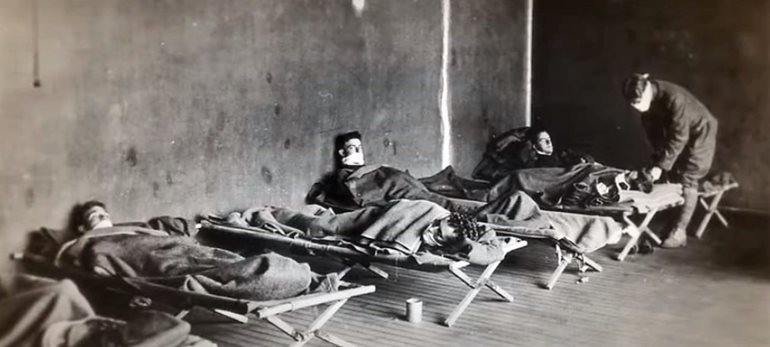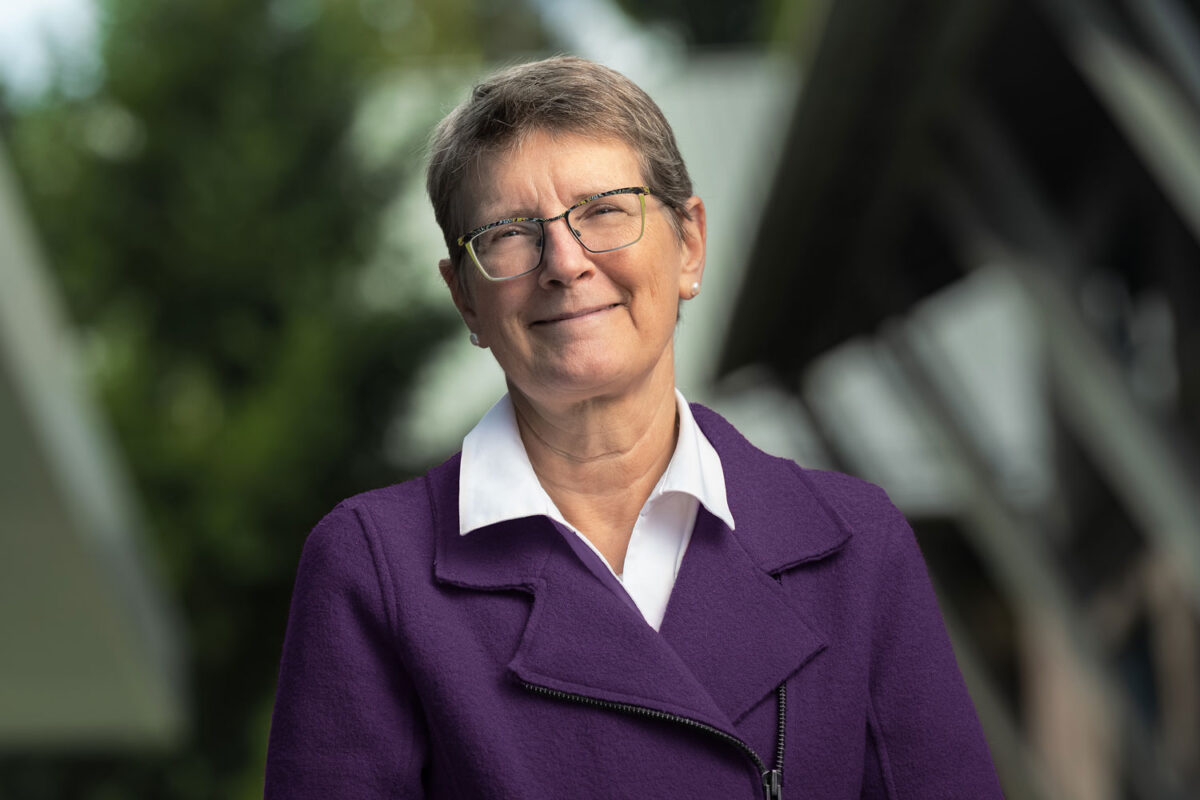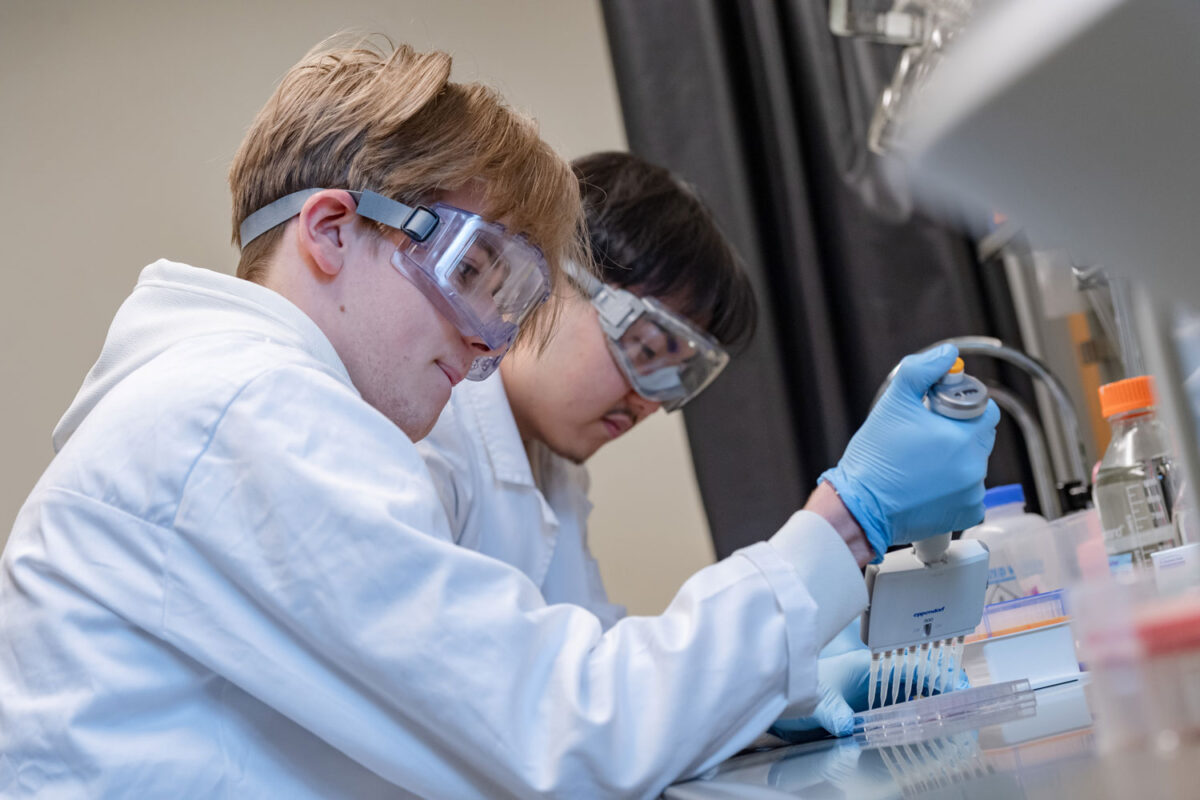
By Douglas Esser
Last March, when Stefanie Iverson Cabral started thinking about the coronavirus pandemic in comparison to the 1918 influenza pandemic that killed 675,000 Americans, she thought it couldn’t be that bad this time. She’s changed her mind.
There’s a real possibility we’re going to approach those numbers, said Iverson Cabral, an assistant teaching professor in the University of Washington Bothell’s School of Nursing & Health Studies. “I think it’s going to get a lot worse before it gets better.”
Iverson Cabral has been studying infectious diseases for 20 years. She teaches courses about epidemics and global health. She knew another pandemic would happen. “I didn’t know when, and I didn’t know how,” she said. “I didn’t know I would live through it.”
Patterns in history

The parallels to 1918 have been weighing on Iverson Cabral. Back then, about a third of the worldwide population got infected, and 50 million to 100 million people died in a period of 18 months. That pandemic had three spikes that corresponded to the United States entering World War I, the Armistice celebrations and the troops returning home. Because of wartime secrecy, the disease largely went unreported except in neutral Spain. That’s why the pandemic became known as the Spanish Flu.
What a difference a century makes, Iverson Cabral thought, at first.
“We already know what’s causing it. We have the prospect of a vaccine. We have ventilators. We have antibiotics. We have all of these things in place,” she said. “I knew people would resist wearing masks, and I knew people would resist social distancing. But I didn’t think it would be as many people as it is.”
The coronavirus numbers are staggering — millions of cases in a matter of days. “And we know hospitalizations will come two weeks after the cases. And we know the deaths will come in four weeks,” she said. “I think December will be a very sad month for a lot of people in this country.”
New perspectives
After teaching a history of infectious diseases course for a half-dozen years, Iverson Cabral is looking at the course materials in a different light. The week the class read about the Plague of Justinian — the sixth century plague that even sickened the emperor in Constantinople — was the week that President Trump was hospitalized.
In 1793, a yellow fever epidemic hit Philadelphia, the U.S. capital at the time. Residents who could afford to leave, including President George Washington, fled. “It made you think about who has the ability to leave and who is left behind,” Iverson Cabral said.
Another plague that hit in Honolulu in 1900 was centered in Chinatown slums, which caused many people to stigmatize the Asian population.
In the 1950s, the Salk vaccine was welcomed by parents. They generally trusted medicine and doctors to protect their children from polio. Now, influenced by misinformation and conspiracy theories, many people won’t even wear masks. Iverson Cabral doesn’t foresee those people getting coronavirus vaccines.
Her students have been watching some public health documentaries from 10 to 20 years ago. They see Dr. Anthony Fauci, who has been director of the National Institute of Allergy and Infectious Diseases since 1984.
His message has not changed: “Dr. Fauci is always in them, and he’s always saying the same thing, ‘We need to be prepared,’” Iverson Cabral said.
Lessons learned
There are some reassuring things to be learned from our pandemic experience, Iverson Cabral said.
Look at the innovations that produced vaccines in less than a year. People are more likely to pay attention to the emergence of pathogens and zoonotic diseases from animals. And people have the opportunity to imagine a society without structural inequalities.
The best lesson of all, though, is that this will not go on forever.
“We don’t know when. We don’t know how, but at some point, it will be over,” Iverson Cabral said. “I don’t think we’re ever going to get back to whatever normal was. We can at least be living a more normal life.”



